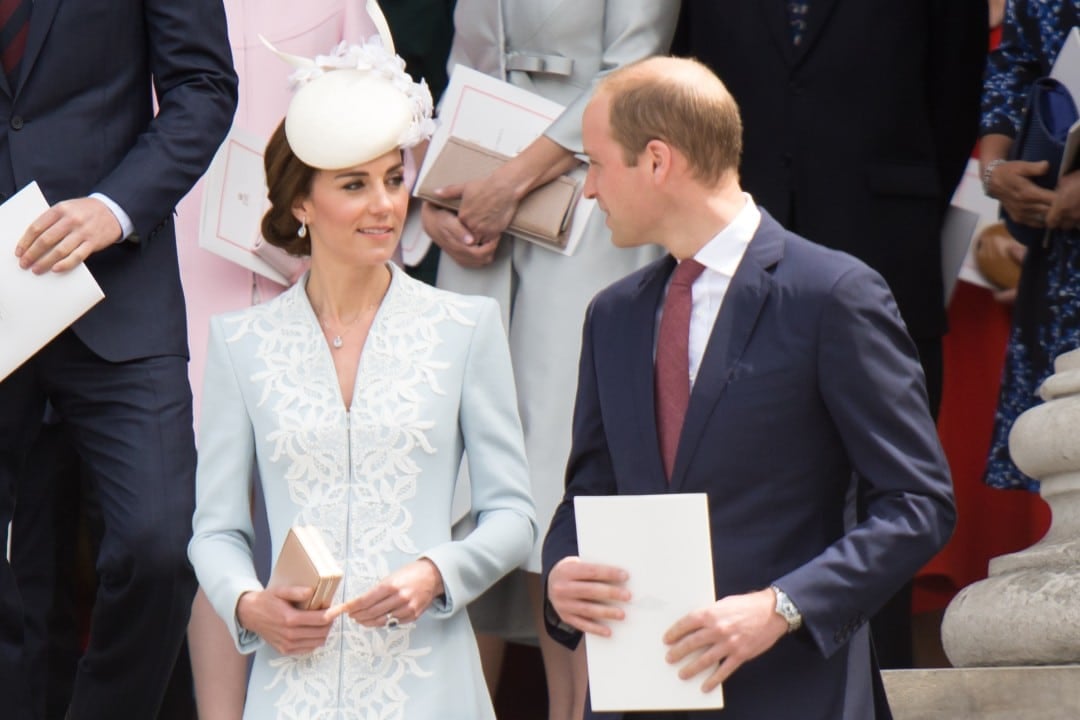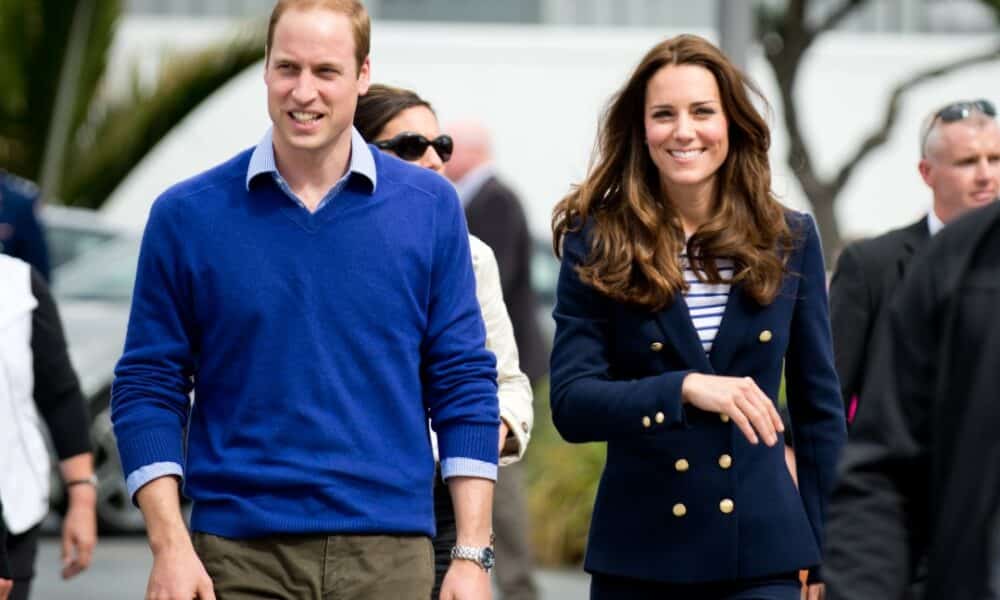Share
Tweet
Share
Share
The British monarchy faces uncertainty in April 2025, with King Charles III, aged 76, grappling with declining health due to cancer diagnosed in February 2024. The monarch, who ascended the throne in September 2022 following the death of his mother, Queen Elizabeth II, confronts a disease that restricts his public appearances and accelerates succession plans. Charles’s brief hospitalization on March 27 in London, due to treatment side effects, canceled official engagements and underscored the urgency of transitioning to Prince William, 42, and Kate Middleton, also 42. The couple, already shouldering significant royal responsibilities, emerges as a pillar of stability for an institution generating £1.8 billion annually for the UK economy. As Charles resumes work at a reduced pace in Clarence House, pressure mounts on his heirs, particularly as six Commonwealth nations debate independence.
Despite his frailty, Charles III maintains a minimal schedule of private meetings and official document reviews. His appearance in Windsor in early April for an investiture ceremony was an effort to demonstrate continuity, though he appeared visibly weaker. Queen Camilla, 77, has taken on additional engagements, such as receptions at Buckingham Palace, while the king focuses on administrative tasks. Partial transparency about his health fuels speculation, but the Palace keeps the cancer’s type and stage confidential, prioritizing the Crown’s image of strength.
Prince William, as Prince of Wales, has intensified his role, handling about 80% of the king’s duties in 2025. He represented Charles at international events, such as the reopening of Notre-Dame Cathedral in Paris in December 2024, and managed the Duchy of Cornwall, which generated £23 million last year. Kate, after completing chemotherapy in September 2024 for cancer diagnosed in January, has gradually resumed public duties, focusing on causes like mental health and child development. The couple’s 75% public approval rating, 20 points above the royal average, solidifies their position as future leaders of the monarchy.
Charles III’s health and its impacts
Charles III’s cancer diagnosis, identified after surgery for a benign prostate enlargement, marked a turning point in his reign. In 2024, he attended over 200 public events, but in 2025, this dropped to just 50, highlighting the disease’s toll. International trips, totaling 25 in 2023, fell to under 10 this year, with the king’s schedule cut by 75%. The March hospitalization, though brief, canceled events like an investiture ceremony planned for March 28, underscoring the severity of his condition.
Despite challenges, Charles shows determination. His Windsor appearance, where he honored British citizens, was widely publicized as a sign of resilience. Queen Camilla has played a crucial role, taking on duties like hosting celebrities at Buckingham in February. The royal couple, celebrating 20 years of marriage in 2025, maintains a supportive routine, with Camilla often accompanying the king or representing him alone.
The monarchy, reliant on its image of stability, faces the challenge of balancing the king’s humanity with the need for continuity. Limited transparency about Charles’s health contrasts with the secrecy of Elizabeth II’s era, reflecting a more open yet cautious monarchy. The current situation forces the Crown to adapt swiftly, with William and Kate assuming central roles sooner than anticipated.
- Changes in Charles III’s schedule:
- 75% reduction in public events in 2025.
- International trips dropped from 25 in 2023 to under 10.
- Focus on private meetings and administrative tasks.
- Camilla handled 30% of royal engagements in 2025.
William: the prince prepared for the throne
Prince William has emerged as the monarchy’s primary figure amid his father’s health crisis. Trained from youth for the throne, he blends practical experience—gained as a Royal Air Force pilot—with a focus on modern issues like sustainability and mental health. In 2024, William completed 10 international trips, a personal record, including visits to Canada and New Zealand to strengthen Commonwealth ties. His 78% public approval rating in 2025 surpasses Charles III’s 65%, cementing his role as the future king.
Managing the Duchy of Cornwall, a 52,000-hectare estate generating millions annually, showcases William’s administrative skill. In 2024, the duchy saw a 5% revenue increase, reaching £23 million, reinvested in social and environmental projects. His Earthshot Prize initiative raised £15 million for climate solutions, bolstering his image as an engaged global leader.
William also balances royal duties with family life. Father to George, Charlotte, and Louis, he shields his children from excessive exposure but has introduced Prince George, 11, to public events like charity visits. The accelerated transition, driven by Charles’s health, places William under pressure, but his preparation and popularity suggest readiness to lead the monarchy in a critical moment.
Kate Middleton: resilience after cancer
Kate Middleton faced one of her life’s toughest years in 2024, with a cancer diagnosis in January following abdominal surgery. Chemotherapy, completed in September, kept her from public life for months, limiting her to 40 events in 2024, down from 120 in 2023. In 2025, Kate plans 20 engagements, focusing on charities for children and mental health, causes she has championed for over a decade.
Kate’s gradual return, marked by an emotional September 2024 video announcing the end of treatment, received widespread support. Her 70% approval rating reflects British admiration for her resilience. William publicly praised her strength, highlighting the couple’s unity as a monarchy asset. Kate’s cancer experience has also connected her with the public, as she uses her platform to promote disease awareness.
The princess, who turned 42 in January 2025, remains active in raising her children, who are beginning to join their parents at select events. Her careful approach, balancing royal duties and family, strengthens her image as a future queen consort. Charles III’s health crisis and her own recovery place Kate in a prominent role, with the public viewing her as a figure of empathy and determination.
Impact on the Commonwealth and monarchy’s relevance
Charles III’s health crisis coincides with a delicate moment for the Commonwealth, with six nations, including Jamaica and Australia, planning independence debates in 2025. Barbados, which left the monarchy in 2021, sets a precedent, increasing pressure on William and Kate to reinforce ties with the 56 member nations. The couple made strategic visits in 2024, such as to Canada for cultural events and New Zealand for environmental partnerships.
Domestically, the monarchy’s £100 million annual cost is questioned by 40% of Britons, though it generates £1.8 billion for the economy, including £500 million from tourism. Initiatives like William’s £20 million raised for mental health in 2024 help justify this investment, but the Crown must stay relevant in a changing world. William and Kate, with their modern approach and 20% higher approval than the royal average, are key to this goal.
The monarchy also faces cultural challenges. Younger generations, aged 18–34, show less attachment, with only 55% supporting its continuation. William’s focus on sustainability and Kate’s mental health advocacy aim to win over this demographic, promoting a more accessible monarchy connected to contemporary issues.
- Commonwealth challenges:
- Six nations debate independence in 2025.
- Barbados left the Crown in 2021.
- William and Kate visited Canada and New Zealand in 2024.
- Couple’s approval is 20% higher than royal average.
A historic transition in perspective
The British monarchy has faced abrupt transitions before. In 1936, Edward VIII’s abdication led to George VI’s reign, and in 1952, George VI’s sudden death crowned Elizabeth II at 25. Charles III, who ascended at 73, may have one of the shortest reigns since Edward VIII, with his health forcing an early succession. William, with extensive training in diplomacy and management, and Kate, with her humanitarian focus, prepare to lead amid global and domestic challenges.
Prince George, 11, has attended five public events in 2024, such as charity visits, echoing Elizabeth II’s early preparation. Charlotte, 9, and Louis, 6, are also being introduced, ensuring the lineage’s continuity. The family, residing in Kensington Palace, maintains a structured routine, with William and Kate prioritizing their children’s emotional stability during the crisis.
Monarchy history shows that uncertainty can strengthen the institution. Elizabeth II, who navigated crises like World War II and Diana’s death, solidified the Crown as a symbol of continuity. William and Kate, with their popularity and modern approach, have the chance to redefine the monarchy for the 21st century, but face the challenge of maintaining relevance in an increasingly republican world.
Royal crisis timeline
Recent events shape the monarchy’s transition:
- February 2024: Charles III diagnosed with cancer after prostate surgery.
- January 2024: Kate Middleton begins cancer treatment post-abdominal surgery.
- September 2024: Kate completes chemotherapy, announces gradual return.
- December 2024: William represents king at Notre-Dame reopening in Paris.
- March 2025: Charles III hospitalized for treatment side effects.
- April 2025: Charles resumes work at reduced pace in Clarence House.
William and Kate’s personal challenges
William faced intense pressure in 2024, balancing royal duties with supporting Kate during her treatment. His ability to keep the family united while managing initiatives like the Earthshot Prize earned praise from 80% of Britons aged 18–34. The prince, who dealt with the loss of his mother, Diana, in 1997, shows resilience, though close sources note the emotional toll of his father’s health crisis.
Kate transformed her cancer experience into a platform for awareness. Her participation in events like a London child development school visit in March 2025 reinforces her commitment to social causes. The princess, who maintains a routine of exercise and meditation for recovery, is seen as a model of overcoming adversity, with her approval surpassing Charles III’s by 15 points.
Queen Camilla, though less popular at 50% approval, remains a steady presence beside Charles. Her schedule, including an April 2025 Italy trip, highlights her essential support role. The monarchy, under strain, relies on all members’ collaboration to navigate this turbulent period, with William and Kate leading the new generation.
Monarchy’s economy and tourism
The British monarchy is an economic powerhouse, generating £1.8 billion annually, with £500 million from tourism. Attractions like Buckingham Palace, hosting 500,000 visitors yearly, and the Tower of London, with 3 million, thrive on the Crown’s image. Charles III’s health crisis raises questions about this model’s sustainability, with 40% of Britons questioning the £100 million annual cost.
William and Kate’s popularity sustains public interest. Events like Trooping the Colour, drawing 1.2 million spectators in 2024, and their charity appearances generate positive publicity. William’s Duchy of Cornwall management, funding his initiatives, reduces reliance on public funds, addressing cost criticisms.
Tourism faces challenges, however. Charles III’s reduced appearances limited events like investiture ceremonies, which attract international visitors. William and Kate, with 300 events in 2024, filled this gap, but the monarchy must innovate to maintain economic relevance amid the crisis.
The Crown’s future under William and Kate
The transition to William and Kate offers a modernization opportunity. William plans to expand the Earthshot Prize, reaching 50 countries, while Kate aims to launch a 2026 mental health campaign. The couple, blending tradition with accessibility, is seen as capable of winning over younger generations skeptical of the Crown.
Prince George’s preparation, including a 2024 London charity visit, signals a planned succession. His poise drew widespread praise, while Charlotte and Louis, less exposed, are also being groomed, ensuring the lineage’s future. The monarchy, having survived wars, revolutions, and internal crises, faces a resilience test. Charles III’s health, Kate’s recovery, and William’s leadership will shape the Crown’s path, with the couple as the hope for a reinvented institution.
- William and Kate’s initiatives:
- Earthshot Prize raised £15 million for environmental projects.
- Kate plans 20 events in 2025, focusing on mental health.
- William managed £23 million from Duchy of Cornwall.
- Couple’s approval hits 75%, against Charles III’s 55%.
 Princess Kate Middleton and Prince William – Photo: Mr Pics / Shutterstock.com
Princess Kate Middleton and Prince William – Photo: Mr Pics / Shutterstock.com 
